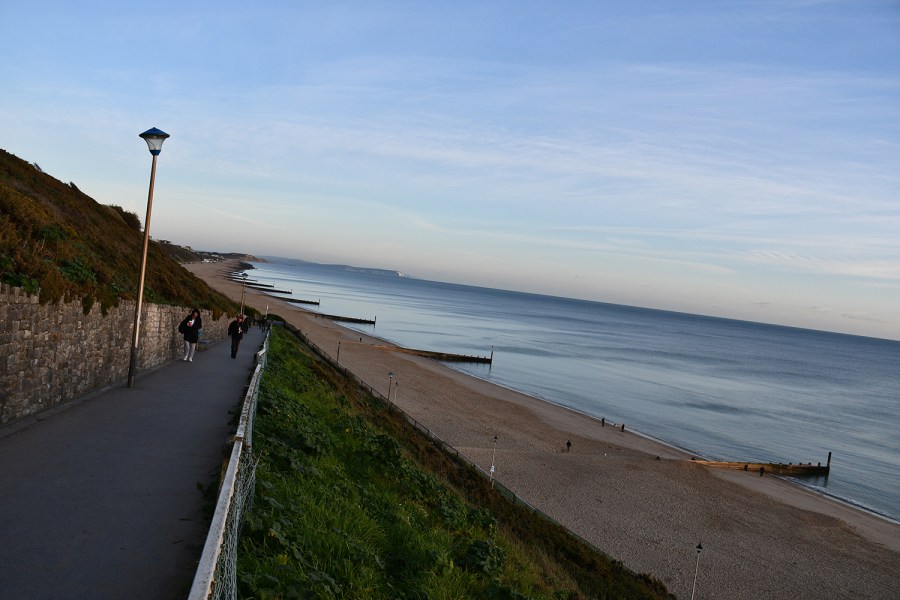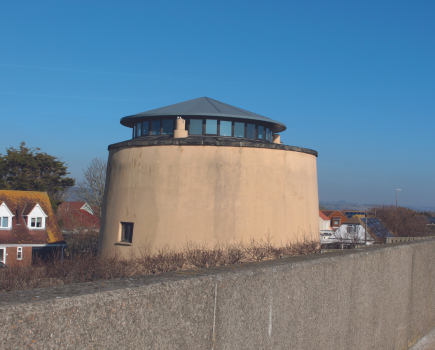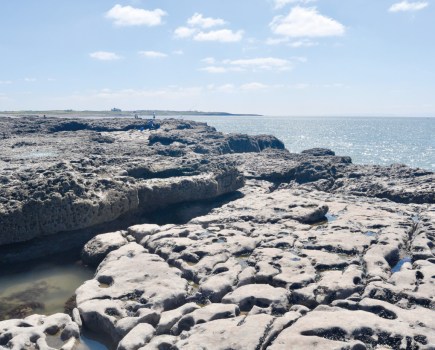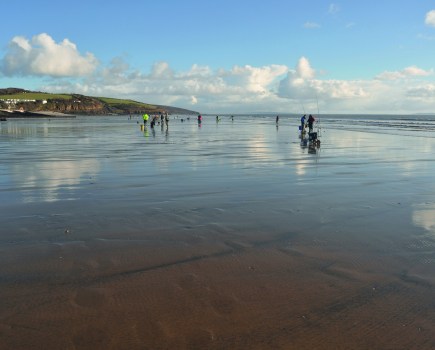The sandy beach at Fisherman’s Walk in Southbourne may look unproductive, but it’s full of surprises
Words and photography by CHRIS CLARK
Often described as a wilderness of barren sand, Southbourne beaches to the east of Boscombe Pier are surprisingly productive especially throughout the spring and autumn.
Nocturnal small-eyed-rays are the main target during April and May but between September and the end of the year a wide variety of species put in an appearance including rays, soles, plaice, gurnards, bass and even a few small smoothhounds.
To check out the area’s potential I met up with my old mate Steve Lawrence for an evening session to target the once popular but now rarely fished Fisherman’s Walk section, which is about one mile to the east of Boscombe Pier. The Blue Flag beach is among a group of sandy beaches along the Bournemouth seafront.
This was December and I arrived just on dusk while Steve would be joining me a couple of hours later after work. There is free roadside parking at the top of cliff with a zigzag path winding its way down to the beach. Be warned this can have you puffing on the return journey.
Bait choice is fairly simple, consisting of a couple of packets of sandeels and a half a pound of ragworms. Other baits, including lugworms, squid and mackerel, will produce but, to be honest, I always try to keep these trips simple.
A standard three-hook paternoster rig with the 15lb hooklengths being two feet long and armed with Kamasan B940M hooks in size 4 will catch the flatfish and bits. A two-hook flapping rig with 20lb hooklengths (3ft long) armed with size 1/0 uptide hooks should suffice for the rays.
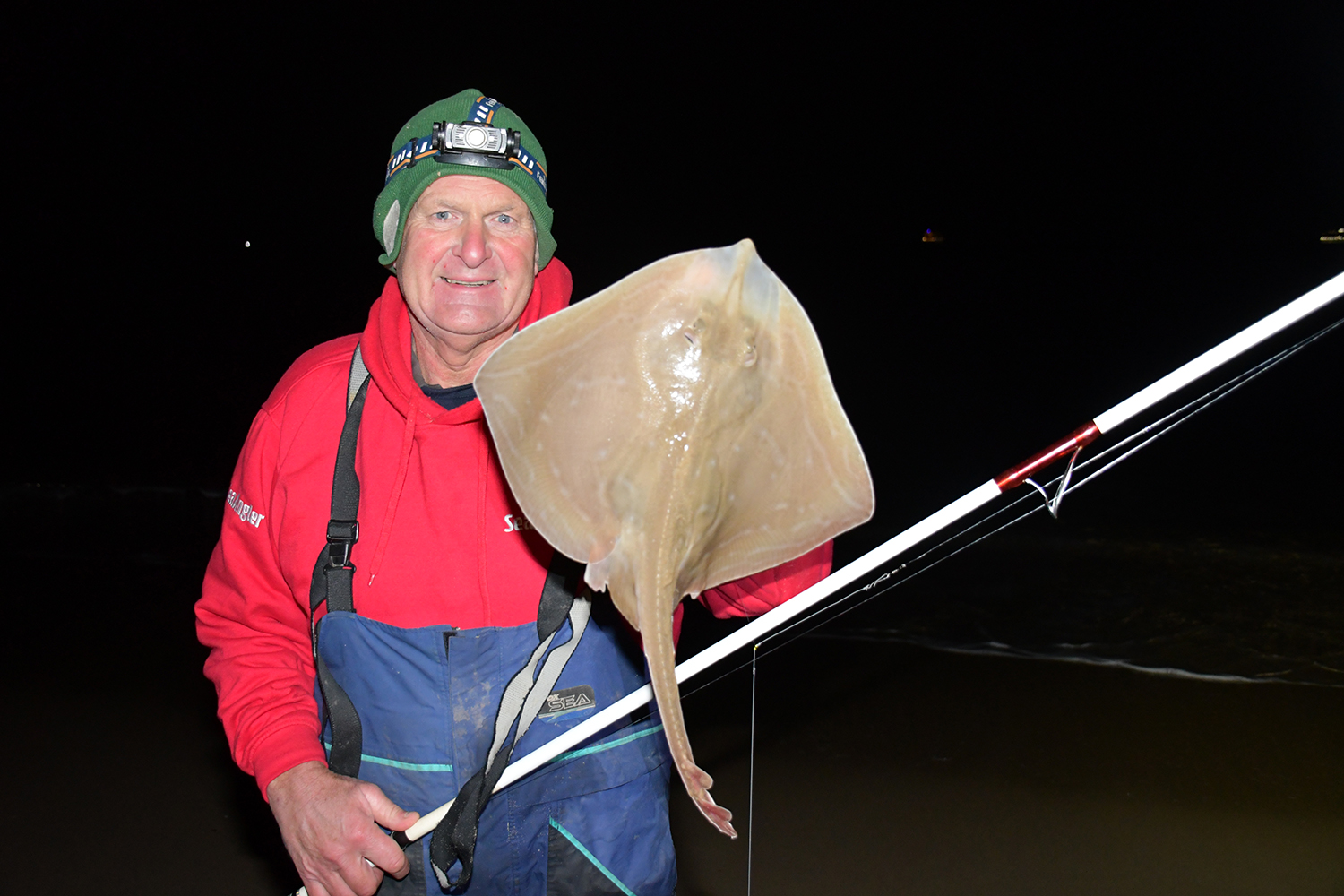
SHIFTING SAND
One important factor when selecting your fishing spot along this stretch in Southbourne is to check from the cliff top to see the position of the forever changing sandbars. These are often created after beach renovation projects. Thousands of tons of sand are dumped on the beach only to get washed back out to sea during stormy conditions, creating gullies and bars and countless fish and food-holding areas
When fishing along Southbourne beaches, I favour a flood tide. The start of the flood with its right to left pull can be particularly productive for flatfish, especially for the big casters.
On this occasion when I peered over the cliff top the conditions looked perfect with only a ripple on the sea’s surface. There was a very pronounced sandbar around 130 metres offshore along with a relatively deep gulley running fairly close to the shoreline, a sure holding area for both bait and fish.
Fishing to your strengths is often an important factor in being successful. With my damaged shoulder there is no way nowadays that I could put a bait over the sandbar hence it would be the trace baited with sandeel cast 20 metres inside the sandbar for the rays and the three-hook trace plopped directly in the centre of the gulley hoping for some flatties or anything else that waved a white flag.
You may also like
Try the Dorset Coast for Fantastic Sea Fish Sport
Bridging Camp, Chesil Beach Sea Fishing Mark
TREBLE SHOT
Arriving with the last rays of sunlight streaking over the beach and most of the walkers heading for home, it allowed just enough time to check out whether there were any plaice still feeding in the gulley. Once dark they would rapidly disappear.
Not to be disappointed, within a coupled minutes of casting just 40 metres the rod tip started to dance resulting in a treble shot of small but nicely marked plaice followed by a double shot on the next cast.
With daylight becoming a distant memory and a few flatties already on the beach, it was time to switch tactics and seek out some rays. While I was using only a plain three-ounce bomb weight when fishing for smaller species, I favour a five-ounce grip weight on my ray rigs because it reduces the chance of a missed bite.
My first cast of around 80 metres landed just on the inside edge of the sandbar and it only took a few minutes before attracting some attention. Steve had just arrived when I had several pull-down bites and the culprit turned out to be a small-eyed-ray of around 2lb. A promising start but there was far better to come.
Steve used slightly different tactics, a two-hook clipped rig with size 2/0 uptide hooks baited with sandeels, while on his second rod he fished a squid/sandeel cocktail on a size 3/0 Pennell. His first cast resulted in a few rattles on the sandeel bait, which he missed but he made no mistake on his second cast beaching a small ray. Shortly after he cast out again, the rod tip was rattling away but on this occasion it was a brace of whiting, but not the usual pins associated with Southbourne.
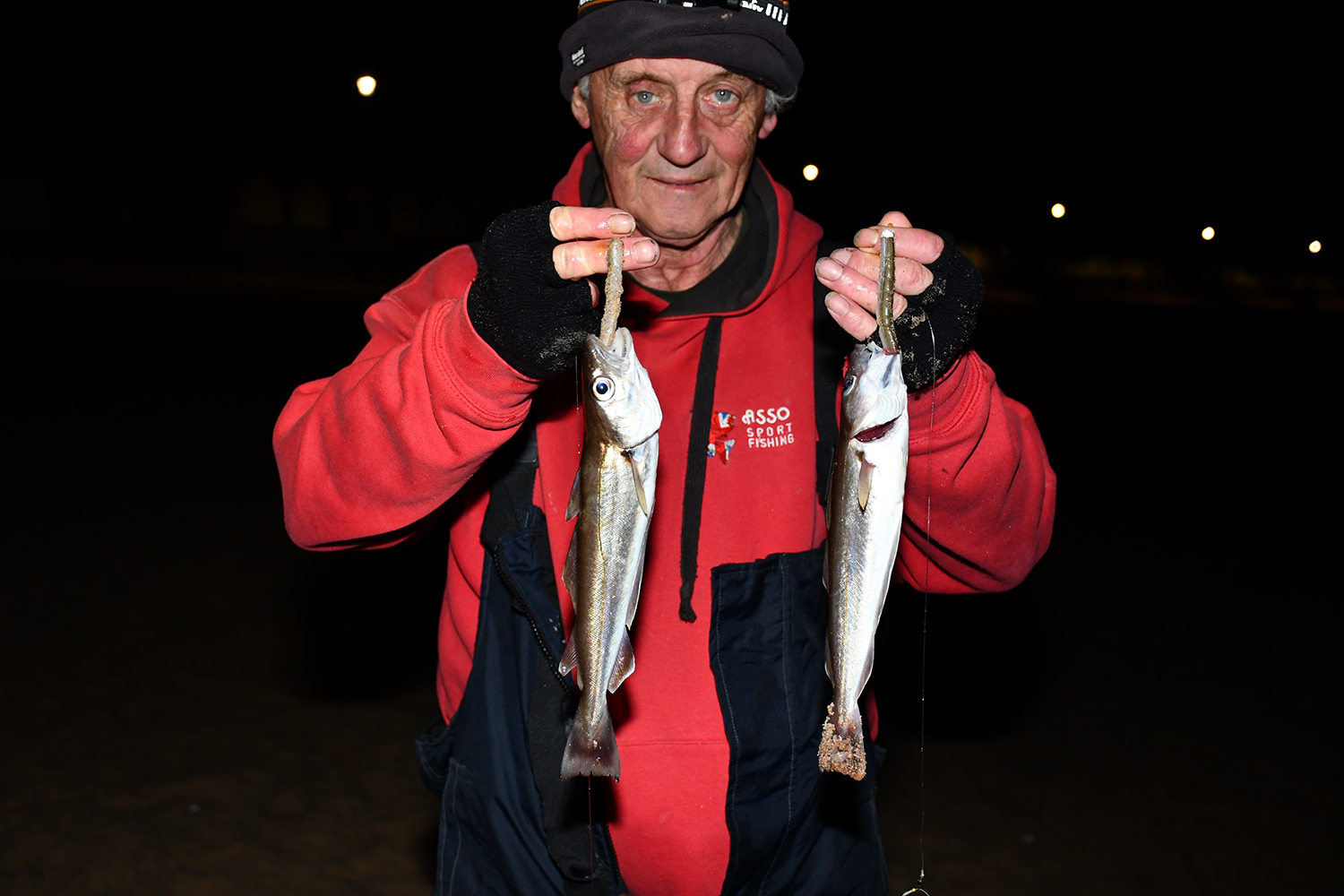
BUSY FISHING IN SOUTHBOURNE
This set the scene for the next couple of hours during which we caught a steady stream of bait-ravaging whiting, all of good size, along with a fair number of rays.
My second ray fell to a sandeel bait and my next cast produced a double shot of small-eyeds, nothing huge but great sport for the time of year on a relatively light continental rod. Steve caught plenty of fish too, especially whiting on his sandeel baits but his larger squid/sandeel bait remained almost untouched.
During the space of four hours, apart from the plaice and numerous good size whiting for the area, Steve had beached a trio of rays and I managed half a dozen leaving the best fish for my very last cast.
After a pretty insignificant bite I was really surprised at the initial resistance, which is normally a good indicator of what is on the other end. Unlike the smaller rays, this fish kept fairly deep and hugged the bottom all the way to the shoreline. A couple of minutes later the heaviest and nicest marked small-eyed ray was at my feet What a way to finishing a hectic session in near perfect conditions.
Four hours of action-packed fishing when everything comes together is the sort of session to be remembered for many days, while the walk back to the top of the cliff, which seems to get longer and stepper on every trip, will be remembered for all the wrong reasons.
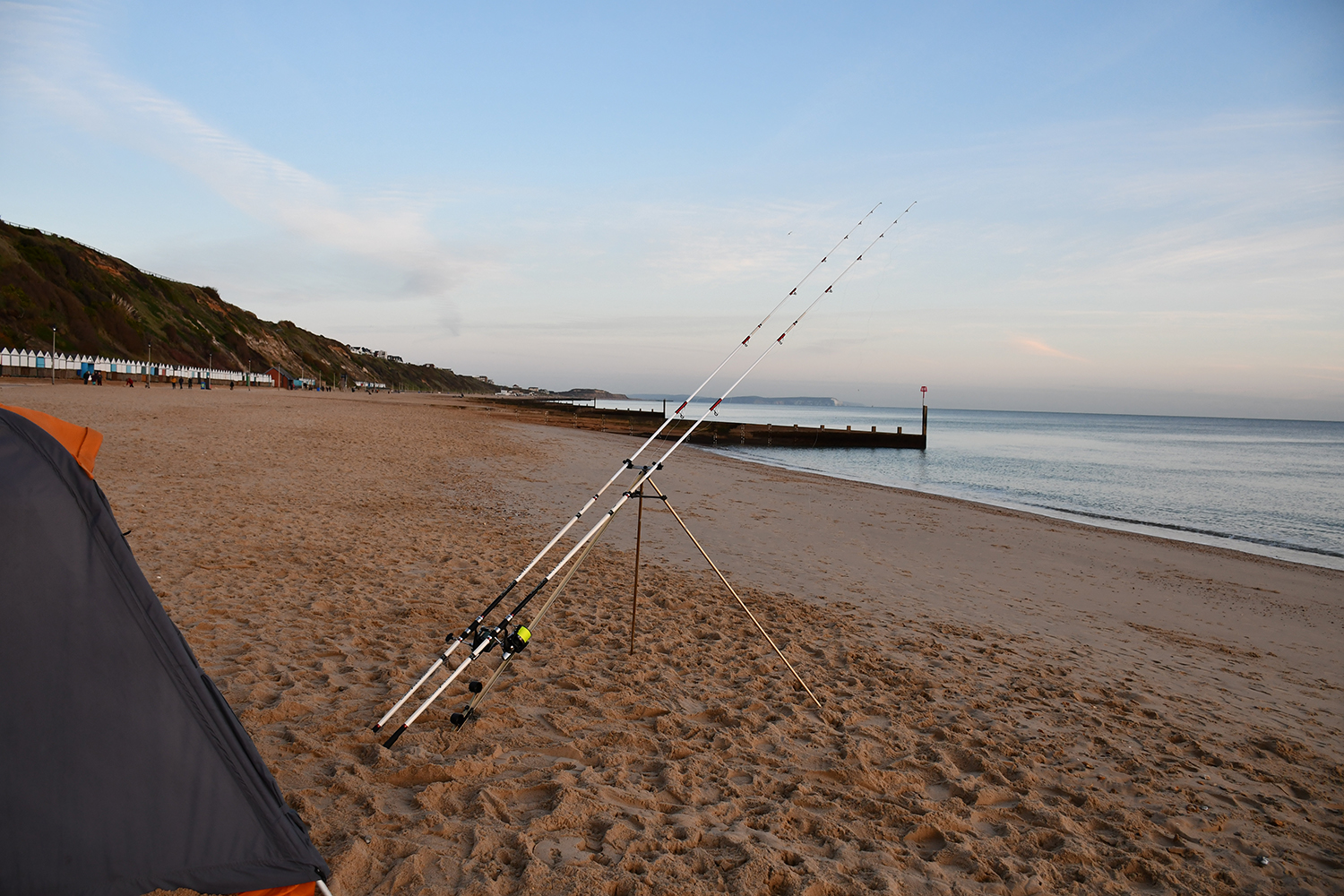
NEED TO KNOW
Getting there: With a cliff top road running along the entire stretch from Boscombe Pier to Hengistbury Head it is a very easy venue to locate lying approximately one mile east of Boscombe pier, there is free road side parking.
Tackle Shops: Tackle 914, Christchurch Road, Bournemouth, BH7 6DL, tel: 01202 463313.
Christchurch Angling Centre, 7-8 Castle Parade, Iford, Bournemouth, tel: 01202 480520.
TOP TIP
As with most fishing sessions try and keep it simple. Ragworms and sandeels are the only bait required for a great evening’s fishing.

